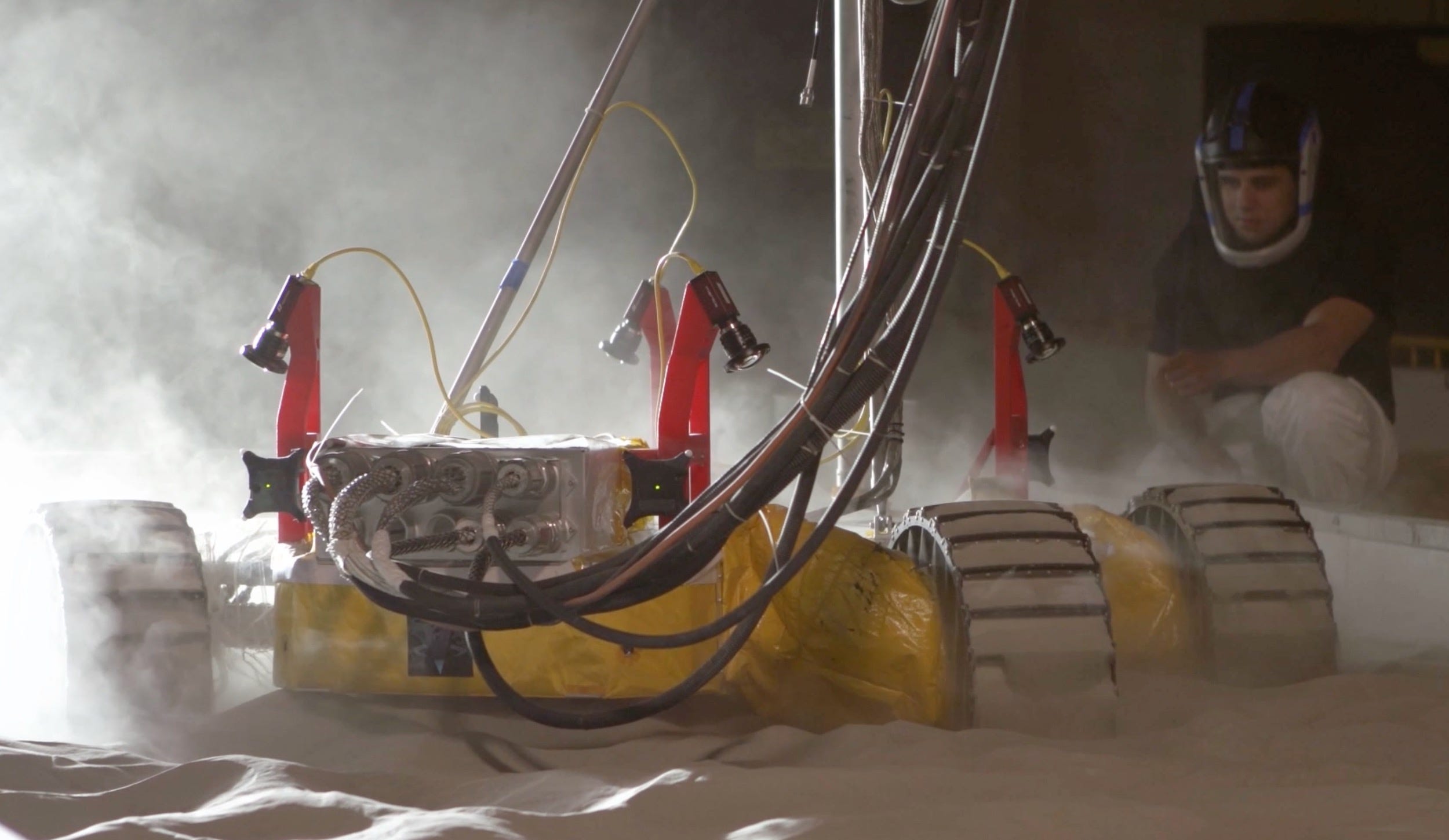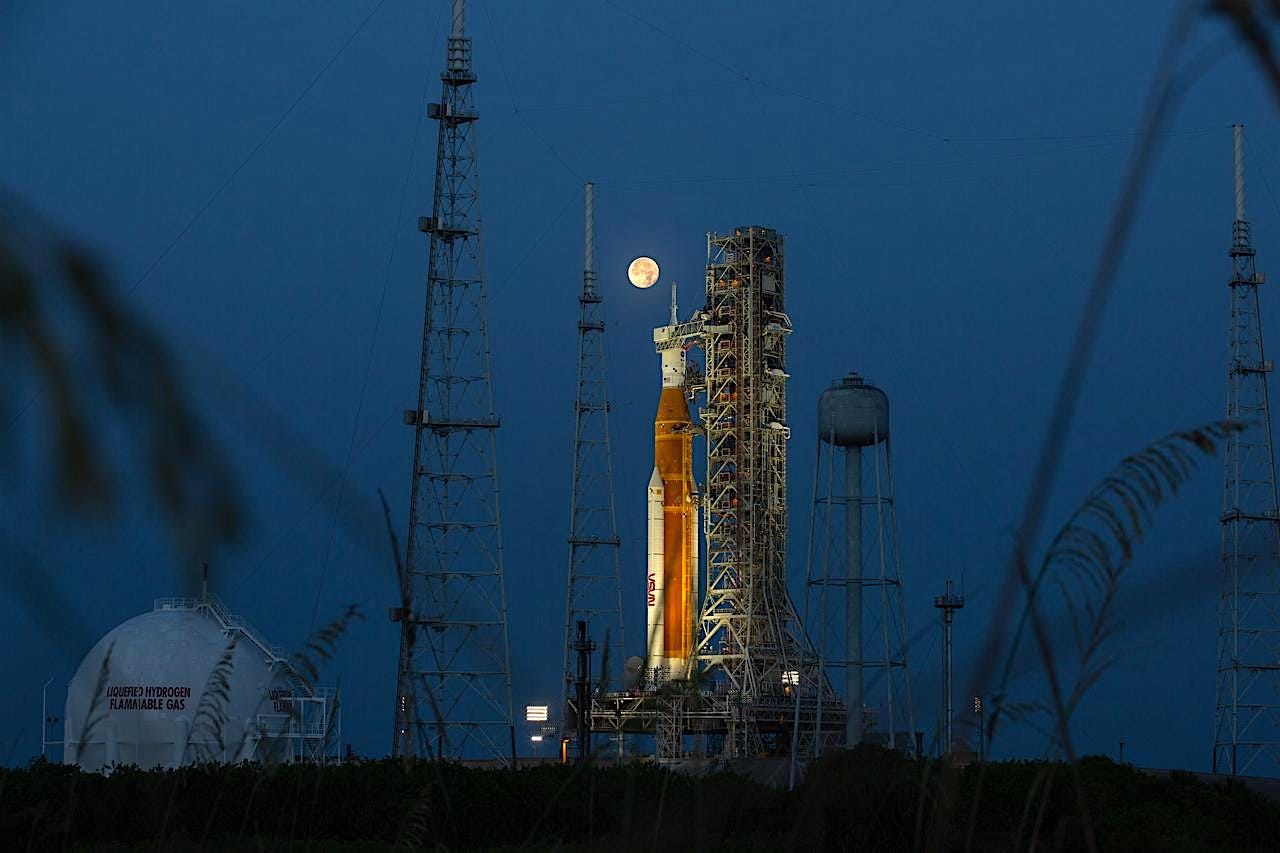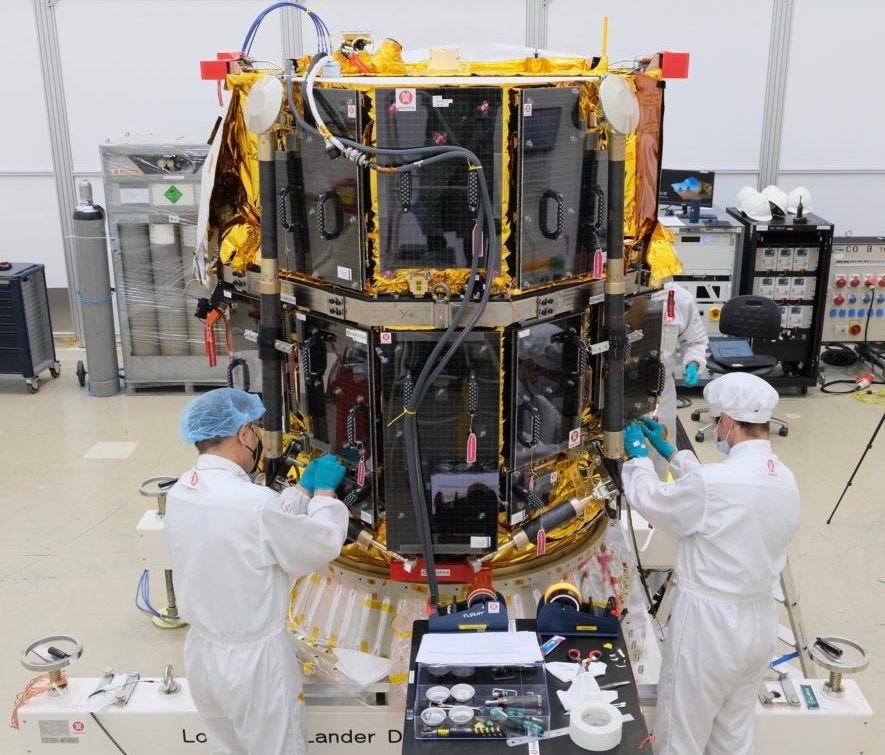Moon Monday #88: An agile lunar rover, donating lunar regolith, a lander nearly ready, and more updates
NASA’s VIPER rover endures a steep SLOPE
The VIPER rover, launching in 2024 on an Astrobotic lander as part of NASA’s CLPS program, will closely study lunar water and other volatile resources on the Moon’s south pole to inform future robotic and crewed missions. On top of dealing with the numerous challenges in any Moon mission, NASA is designing VIPER to power through one of the harshest planetary environments in the Solar System.
With temperatures during major investigations well below -180 degrees Celsius, a rocky terrain riddled with steep slopes, a near-horizon Sun causing long, moving shadows that the solar-powered rover needs to keep avoiding or face a freeze, NASA is sending VIPER to lunar hell. To get its job done under such extreme circumstances, VIPER is being designed to traverse 15-degree inclines with ease, and even 25 to 30 degree slopes if need be. VIPER should be capable of driving sideways, diagonally, or move in any direction without changing where it’s heading to keep its solar panels pointed at the Sun. If VIPER gets stuck in fluffy soil, it should be able to lift each of its wheels independently to dig into and sweep along the surface—a bit like swimming or inch-worming—to get out of it.
To ensure VIPER will meet these exotic mobility requirements for mission success, NASA’s Glenn Research Center upgraded their SLOPE Lab last year to test VIPER prototypes on a high fidelity lunar-terrain-imitating sand pit. VIPER’s engineering model arrived at the SLOPE lab this year for final mobility testing to inform the flight rover’s upcoming reviews. The rover aced various drive scenarios amid carefully and methodically simulated lunar terrain and rock permutations, including climbing steep slopes while autonomously avoiding the excessive ones, “inch-worming” out of fluffy soil, wheeling over fairly large boulders, and more. This focus on the sheer agility of a planetary rover is unprecedented but called for by the mission’s needs.

NASA wants a SLS rocket to liftoff every year, eventually
Like it or not, the super heavy-lift big orange SLS rocket is here to stay, apparently for no less than 15 years as a U.S. national capability. Following a Request for Information published on October 26 last year, NASA has now released a pre-solicitation notice saying that it’s preparing to award a contract for future SLS missions to Deep Space Transport LLC, a joint venture between two major SLS contractors Boeing and Northrop Grumman. NASA will transfer ownership of SLS production and associated facilities from the currently multiple hardware contracts per mission to a single launch service contract for Artemis and other missions starting end of decade.
The baseline contract would be for missions Artemis V through IX, at an aspirational rate of one flight per year, and optionally Artemis X–XIV missions and 10 non-Artemis launches. NASA hopes that transitioning the rocket’s ownership to the private industry would slash its cost by 50% or more, and that the agency could then use those saved funds elsewhere in Artemis. After the rocket’s ownership transfer, NASA will remain the primary customer of SLS but the agency says the joint venture should also market the rocket to other potential customers.

How anyone taking over the SLS rocket would lower its cost by at least 50% is unclear. Since the launch vehicle alone currently costs a whopping $2.2 billion per flight, even the desired 50% price reduction amounts roughly to $1 billion, and launches once a year at best. In comparison, a SpaceX Starship mission with equivalent or greater launch capacity could fly more frequently for much cheaper by any measure. One of NASA’s biggest concern with launching astronauts on Starship from Earth seems to be the lack of an emergency escape system, which the Orion spacecraft atop the SLS has. Well, I’m just a space enthusiast but it seems to me that even the route of adapting Orion for any other operational or upcoming heavy-lift rocket would save far more money and launch more frequently. Related read from Casey Handmer: Starship is still not understood.
Building a trusted way to manage lunar resources
On July 27, Orbit Fab and Breaking Ground Trust announced the signing a first of a kind agreement for donating lunar regolith. Orbit Fab develops infrastructure such as RAFTI for refueling spacecraft in Earth orbit, and is interested in extending its products and services to the Moon. Breaking Ground is a trust established last year to develop fair, practical and multi-utility approaches to manage extracted lunar resources, especially as the Moon’s south pole gets increasingly crowded later this decade and beyond.
As part of the agreement, Orbit Fab intends to purchase a small amount of lunar regolith from another company, and then transfer it to Breaking Ground to hold it in trust in order to set precedence for promoting sustainable lunar resource management. The regolith could presumably come from any of the missions by the four companies NASA selected in 2020 to collect lunar material for the agency (note: collect, not return to Earth).
Thanks to Epsilon3 for sponsoring this week’s Moon Monday.
More Moon
Regarding the lack of clarity on Lunar Pathfinder’s 2025 CLPS launch I discussed last week, a CLPS vendor source tells me that NASA will soon release a dedicated competitive bid for the same.
The Korea Pathfinder Lunar Orbiter (KPLO) is targeting launch on August 5 on a SpaceX Falcon 9 rocket. This South Korea’s first Moon mission will show us new views of the lunar surface, and provide critical information about the lunar polar terrain and its water deposits to help plan future crewed and robotic missions. It will also inspire kids, students and people at large in the country. :)
NASA continues preparing and testing the fully stacked SLS rocket for launching the Artemis I mission as early as August 29 to send an uncrewed Orion spacecraft around the Moon and back. Last week’s key preparations include work to arm the flight termination system, and adding protective thermals blankets and seals for the rocket’s second stage and Orion respectively.
In a press release, ispace Japan says their first Moon landing mission could launch in November 2022 on a SpaceX Falcon 9 as the lander’s space suitability testing is going well and expected to be done in September. The lander will carry several payloads to the Moon, including UAE’s Rashid rover (sporting two high-resolution cameras from the French space agency), a solid-state battery tech demo, a transformable lunar robot by the Japanese space agency, and multiple Canadian payloads and services. Interestingly, the press release also claims that all payload slots for their second Moon landing in 2024 are booked.

Technicians prepping the M1 lunar lander for showtime. Credit: ispace After recently laying off employees exclusively working on its first CLPS Moon landing mission, Masten Space has filed for Chapter 11 bankruptcy.
On July 25, the CAPSTONE spacecraft performed its second major trajectory correction maneuver to stay on course to arch back to the Moon on November 13. Interestingly, the maneuver was conducted in two stages so the spacecraft’s navigation software could recalibrate and make the second burn more accurate. The next maneuver is in early September.
I’m glad to be one of the many lunatics appearing on Countdown to the Moon, which is this nice project by Nathan Price to interview people at large about their thoughts and opinions on us sending humans to the Moon again.
→ Browse the Blog | About | Donate ♡
